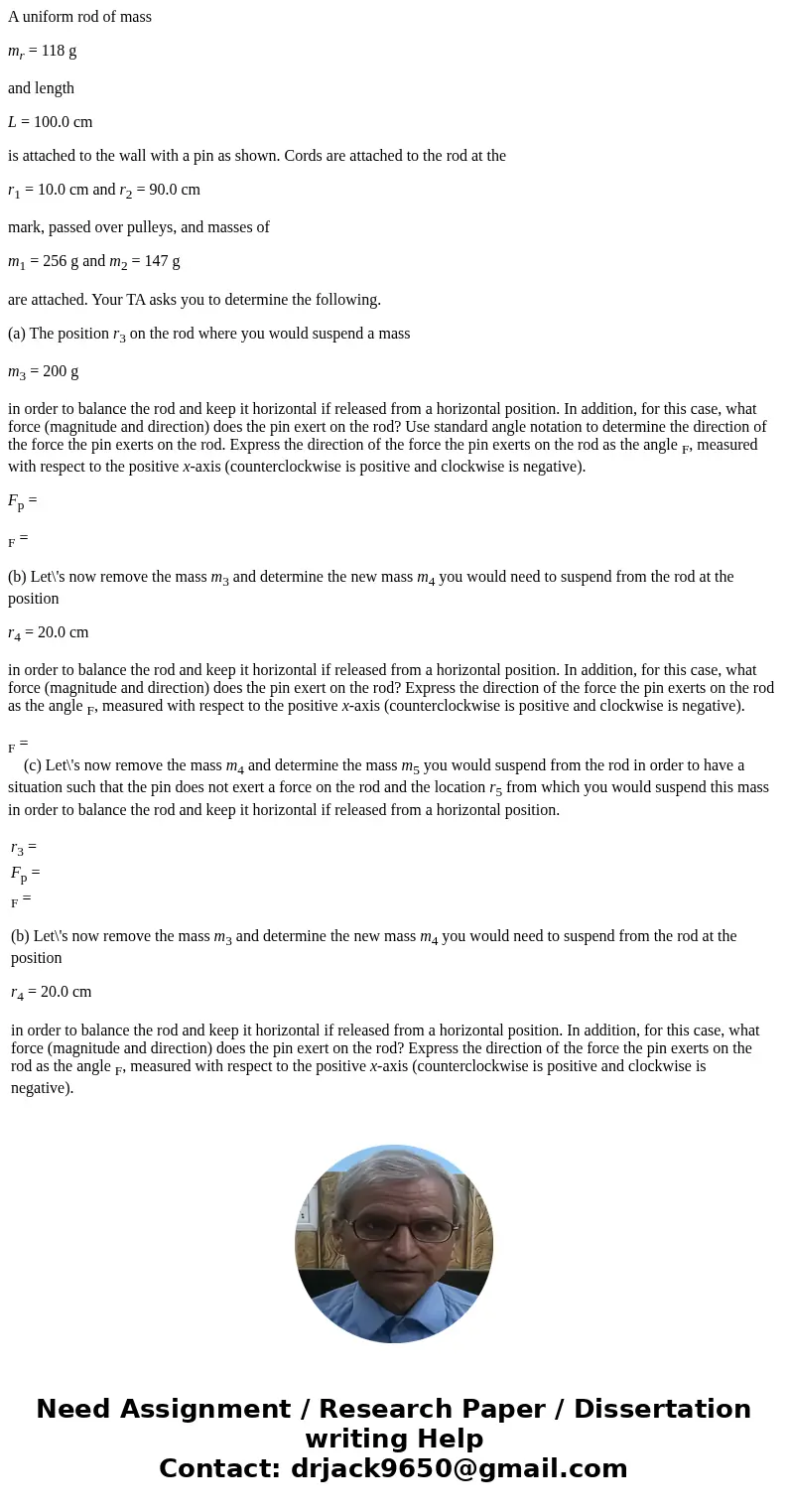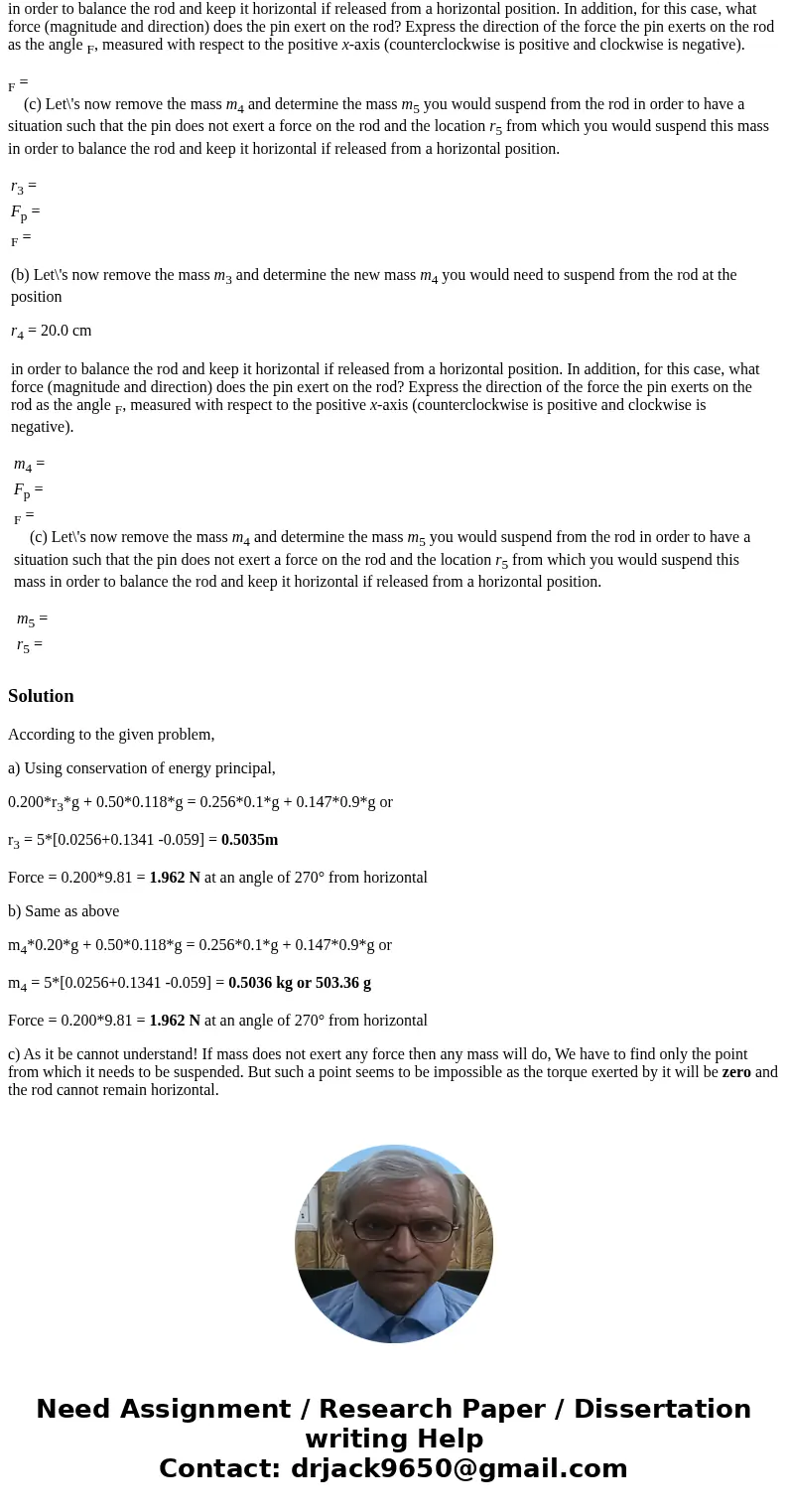A uniform rod of mass mr 118 g and length L 1000 cm is att
A uniform rod of mass
mr = 118 g
and length
L = 100.0 cm
is attached to the wall with a pin as shown. Cords are attached to the rod at the
r1 = 10.0 cm and r2 = 90.0 cm
mark, passed over pulleys, and masses of
m1 = 256 g and m2 = 147 g
are attached. Your TA asks you to determine the following.
(a) The position r3 on the rod where you would suspend a mass
m3 = 200 g
in order to balance the rod and keep it horizontal if released from a horizontal position. In addition, for this case, what force (magnitude and direction) does the pin exert on the rod? Use standard angle notation to determine the direction of the force the pin exerts on the rod. Express the direction of the force the pin exerts on the rod as the angle F, measured with respect to the positive x-axis (counterclockwise is positive and clockwise is negative).
Fp =
F =
(b) Let\'s now remove the mass m3 and determine the new mass m4 you would need to suspend from the rod at the position
r4 = 20.0 cm
in order to balance the rod and keep it horizontal if released from a horizontal position. In addition, for this case, what force (magnitude and direction) does the pin exert on the rod? Express the direction of the force the pin exerts on the rod as the angle F, measured with respect to the positive x-axis (counterclockwise is positive and clockwise is negative).
F =
(c) Let\'s now remove the mass m4 and determine the mass m5 you would suspend from the rod in order to have a situation such that the pin does not exert a force on the rod and the location r5 from which you would suspend this mass in order to balance the rod and keep it horizontal if released from a horizontal position.
| r3 = | |||||||||||
| Fp = | |||||||||||
| F = (b) Let\'s now remove the mass m3 and determine the new mass m4 you would need to suspend from the rod at the position r4 = 20.0 cm in order to balance the rod and keep it horizontal if released from a horizontal position. In addition, for this case, what force (magnitude and direction) does the pin exert on the rod? Express the direction of the force the pin exerts on the rod as the angle F, measured with respect to the positive x-axis (counterclockwise is positive and clockwise is negative).
|
Solution
According to the given problem,
a) Using conservation of energy principal,
0.200*r3*g + 0.50*0.118*g = 0.256*0.1*g + 0.147*0.9*g or
r3 = 5*[0.0256+0.1341 -0.059] = 0.5035m
Force = 0.200*9.81 = 1.962 N at an angle of 270° from horizontal
b) Same as above
m4*0.20*g + 0.50*0.118*g = 0.256*0.1*g + 0.147*0.9*g or
m4 = 5*[0.0256+0.1341 -0.059] = 0.5036 kg or 503.36 g
Force = 0.200*9.81 = 1.962 N at an angle of 270° from horizontal
c) As it be cannot understand! If mass does not exert any force then any mass will do, We have to find only the point from which it needs to be suspended. But such a point seems to be impossible as the torque exerted by it will be zero and the rod cannot remain horizontal.


 Homework Sourse
Homework Sourse